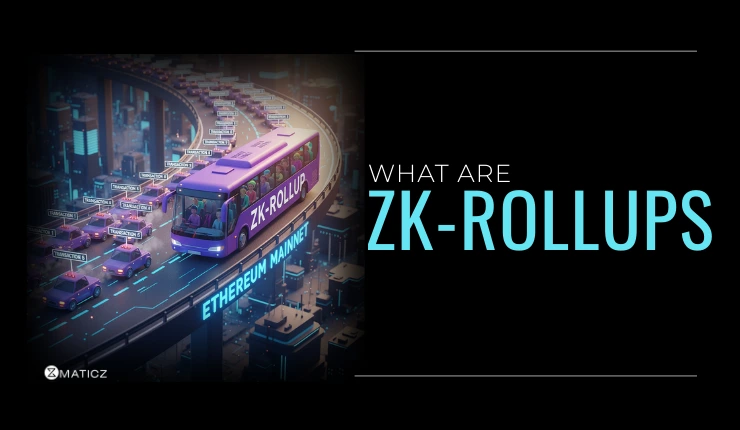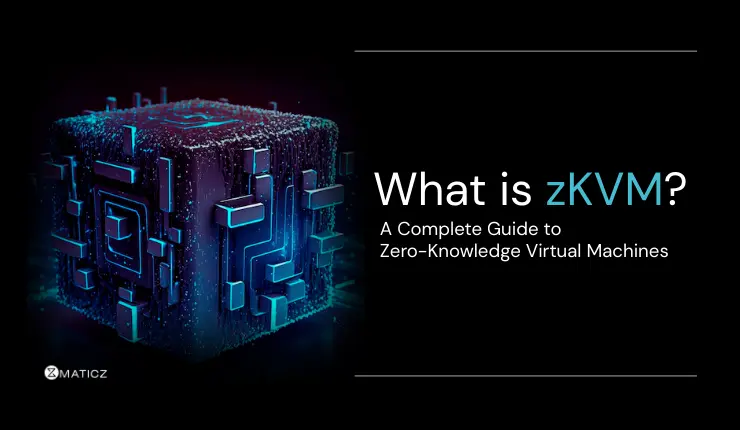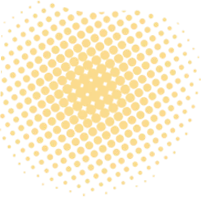Share Posts

Solana dApp Development: A Detailed Guide To Developing dApp On Solana
64
3296
103
In recent times, if there is one thing that has become more significant in web development, then it is a decentralized application (dApp). Being backed by blockchain technology, dApps use a decentralized network and smart contracts for their backend operations. They eliminate the need for intermediaries or central authorities and enable multiple systems to operate seamlessly that are unachievable in traditional web services.
Decentralized applications are no longer confined to blockchain and cryptocurrency. They have entered various industries such as healthcare, supply chain, finance, social media, and games. They have changed the way we manage with their decentralized approach to operations, data management, and value transfer. Most of the dApps have been built using the Ethereum blockchain so far. But there are many popular blockchain platforms on which dApps can be built. One such blockchain network is Solana.
In this blog, we have provided a step-by-step guide on how to build a decentralized application on the Solana blockchain network. We have covered everything right from setting up the development environment to the dApp launch. Also, we have mentioned the things one should consider before starting Solana dApp development. Let's get started.
Why Build dApp On Solana?
But you might be wondering why Solana is used for dApp development. Solana is an open-source blockchain platform that provides a robust framework to build a wide range of decentralized applications. Here are some of the benefits that make this platform the perfect choice when it comes to building dApps.
Lightning Fast Speed
Solana is one of the fastest blockchain networks known for its unmatched speed. It can seamlessly process approximately 2500 transactions per second. With its 400 millisecond block time, it can handle large-scale transactions without any congestion or slowdowns.
Easier To Program
Solana offers a comprehensive suite of tools, libraries, tutorials, and documentation needed to develop, design, and deploy a successful dApp. Using its bridging protocol, Wormhole, it can host multiple decentralized applications on its platform.
Open-source Ecosystem
By choosing Solana for building dApps, developers need not write codes from scratch. It is an open-source ecosystem where developers can simply get easy-to-use software and codes straight from Solana Lab's GitHub.
Low Transaction Cost
Solana is known for its low transaction cost which is equivalent to nearly $0.00025. It does not charge high fees, making it affordable for developers and users to make the most of the platform.
No Mempool Issue
In Solana, users need not wait until the blockchain accepts it. They can directly add the transactions to the blockchain and get them finalized instantly which can avoid network congestion and transaction delays.
Limitless Scalability
Solana is a go-to choice for decentralized applications that require high scalability. Solana utilizes a Proof-of-History (PoH) consensus mechanism to handle high-volume transactions without compromising performance and security.
Things To Consider Before Creating dApp On Solana Blockchain
Every blockchain has its own architecture and programming model. Also, the methods and resources used to build a dApp differ from each other. So, there are certain important things one should consider before start building a decentralized application (dApp) on Solana. With a solid understanding of all we have listed down, one is ready to start building their dApp.
Architecture and Programming Model
Before proceeding with dApp development, it is important to understand the unique architecture and programming model of Solana. Its architecture consists of clusters, a set of validators who work independently to process transactions. As far as its programming model is concerned, it uses a Proof-of-history mechanism to secure transactions.
Development Tools and Libraries
Unlike other blockchain networks, Solana offers a complete suite of development tools and libraries for developers. It offers all the essential tools to get started with the development process of dApps. Especially, Solana Command-Line Interface allows users to interact with the Solana network and do various tasks such as managing wallets, transferring tokens, and more associated with dApps. Also, developers can get pre-built modules from the Solana Program Library (SPL).
Documentation and Tutorials
Solana is known for the comprehensive documentation and tutorials it provides. They help developers have a strong understanding of the core concepts of Solana. The Documentation covers many topics and provides a detailed explanation of its features and how to use them. The tutorials offer step-by-step guides on getting started with its development tools and building various types of dApps.
Programming Experience
Yet another important thing to consider before dApp development is programming experience. Developers should have deep knowledge and vast experience in working with programming languages. Some of the programming languages required for building Solana dApps are Rust, C, and C++.
Expertise In Blockchain
Next comes the expertise in blockchain which is again important for dApp development irrespective of its blockchain networks. Developers should know how to work with blockchain to create bug-free and secure dApp. If one is uncertain about the concept and workings of blockchain, then one should undergo some form of tutorial before going into the programming part.
How To Build A dApp On Solana in 10 Easy Steps?
Here is a comprehensive guide on how to build a dApp on Solana in 10 easy steps.
Define The Objectives
The first step in building a decentralized application (dApp) is to define the objective of your dApp project. Make sure that the dApp you develop solves a specific problem in the area of need in blockchain. You should be clear about why you are developing this dApp and how you will use it to improve your business, before moving on to the next step.
Determine The Features of Your DApp
The next step is to determine the features and functionalities of your decentralized application. The features and functionalities of the dApp vary depending on the practical use of your dApp. If it is for financial services, consider security features whereas for voting purposes, go for identity verification features.
Choose Appropriate Programming Languages and Frameworks
The next step is to choose and install appropriate programming languages such as Rust, Yarn, and the Solana Command Line Interface. Rust is the core programming language for writing smart contracts on the Solana blockchain. Its open-source nature, static typing, and memory efficiency make it an ideal choice for Solana dApps that prioritize reliability and safety.
Solana Command-Line Interface (CLI) helps interact with the Solana blockchain seamlessly and perform various tasks such as managing wallets and transferring tokens. Yarn helps manage all of your dependencies right from dApp development to production.
Also, you need to select the Anchor framework that helps build secure Solana programs easily and quickly. It writes various boilerplates such as serialization of accounts and instruction data and also handles security checks, allowing you to focus more on what matters most.
Setup Development Environment
This step serves as the foundation for your Solana dApp project. Once you have installed all the required programming languages and frameworks, install Node.js used to set up the development environment for building the user interface of your dApp. Get ready with all the necessary configuration files for Rust and Node.js. Make sure that all required dependencies are in place.
Write and Test Smart Contracts
It is the most crucial step in the Solana dApp development process. Next, you need to write code for smart contracts using Rust programming language. To define the logic and functionality of the smart contract, use Solana's Software Development Kit (SDK) and Anchor framework.
Design The dApp User Interface
Now it's time to design the user interface of your Solana dApp using React. It usually happens after the creation of the dApp architecture and smart contract. Front-end development is as important as the backend which provides users with an intuitive user experience.
Implement The Necessary Features and Functionalities
Next, implement all the necessary features and security measures to make your Solana dApp more secure. This is where smart contracts are connected to the user interface of your dApp. To improve scalability and performance, consider incorporating Solana's distinct capabilities, such as executing on-chain programs and processing transactions in parallel.
Connect To A Wallet
In this step, install the Solana wallet adapter that helps manage the wallet. After connecting it, change the wallet to a proper network. Wallet adapters facilitate seamless communication between your DApp and users’ wallets, enabling transactions and interactions with the blockchain.
Solana dApp Testing and Debugging
Before deploying the dApp, it is important to conduct rigorous testing on the smart contract and check its performance. It shows any errors or bugs that might have been missed in the development process. If any technical glitches or issues arise, address and fix them to ensure the uninterrupted performance of your Solana dApp.
Solana dApp Deployment
After fixing all bugs and issues, it's time to deploy the dApp to the Solana blockchain using Anchor. Implement regular updates and patches to enhance security, add new features, and address user feedback.
Why Maticz For Solana dApp Development?
Maticz is a top Solana dApp development company known for developing highly scalable and robust decentralized applications (dApps) built on the Solana blockchain network. Our blockchain experts offer a roadmap and strategic insights to build Solana dApps with current trends. We specialize in creating decentralized exchange (DEX), wallet, token, and NFT marketplaces on Solana to serve various business needs.
We provide reliable Solana smart contract services to accelerate the speed of your business audit. Even if you already have an application but want to migrate it to the Solana platform, then get our dApp integration services. Partnering with Maticz is like getting various top-notch Solana blockchain development services in one place. Anyone ready to build their Solana dApp can approach our team who are always ready to deliver top-notch services.
Tap Into the Future
The latest insights, posts, and project updates - straight to your inbox.




